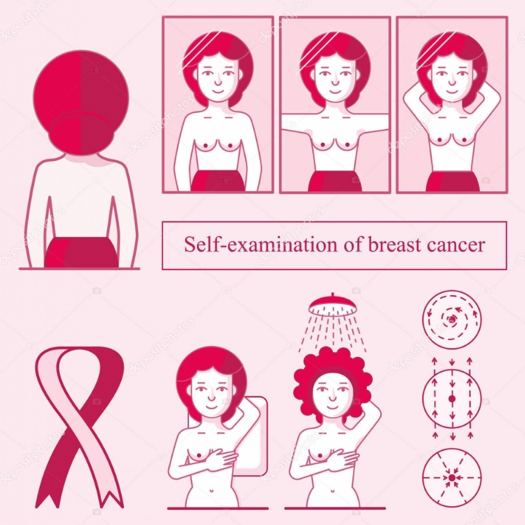Health Tips
Importance of Early Detection of Breast Cancer
What is Breast Cancer :
Breast cancer is a type of cancer that affects the cells in the breast. It is the most common cancer among women worldwide and the second most common cancer overall. While breast cancer can occur in both men and women, it is much more common in women.
Breast cancer starts when the normal cells in the breast start to grow abnormally and form a mass, called a tumor. Not all tumors are cancerous, but if the cells in the tumor are malignant, meaning they can invade surrounding tissues and spread to other parts of the body, it is considered to be cancer.
Breast cancer can be classified into several types, including ductal carcinoma, which starts in the cells that line the ducts of the breast, and lobular carcinoma, which starts in the cells that line the lobules of the breast. Other types of breast cancer include inflammatory breast cancer and Paget’s disease of the nipple.
The exact cause of breast cancer is unknown, but there are several risk factors that have been identified, including age, family history, personal history of breast cancer, certain genetic mutations, and exposure to estrogen.
Importance of Early Detection of Breast Cancer :
Early detection is a crucial factor in the successful treatment and management of breast cancer. When the disease is detected at its earliest stages, there are more treatment options available and the chances of a successful outcome are much higher.
One of the most important tools in early detection is regular mammograms, which are low-dose X-rays that can detect breast cancer before it can be felt by hand. Women over the age of 50 are recommended to have a mammogram every two years, while women with a family history of breast cancer may need to start earlier or have more frequent exams.
In addition to mammograms, there are other screening tests that can be used to detect breast cancer early, such as ultrasound or MRI. Regular self-exams, where women check their own breasts for any changes or lumps, can also be an effective way to detect breast cancer in its early stages.
Early detection also means that there are more treatment options available. If the cancer is detected in its earliest stages, it may be possible to treat it with surgery alone. However, if the cancer has spread, a combination of treatments such as surgery, radiation therapy, and chemotherapy may be necessary.
Finally, early detection can also have a significant impact on a patient’s mental health. A diagnosis of breast cancer can be a traumatic experience, but if the cancer is detected early, patients can feel more confident in their chances of a successful outcome and are more likely to experience less anxiety and stress.
In conclusion, early detection is critical to the successful treatment and management of breast cancer. Regular mammograms, self-exams, and other screening tests can help detect the disease early, and early detection means more treatment options and a better chance of a successful outcome. Regular screening and self-awareness are essential in the fight against breast cancer, and every woman should take advantage of the tools available to detect the disease as early as possible.
How to Do Self Breast Examination:

Self-examination of the breasts is an important part of breast cancer screening and can help detect changes or abnormalities that may indicate the presence of cancer. Here’s how to perform a self-exam:
- Choose a time that is convenient and comfortable for you, such as after a shower or bath when the skin is moisturized.
- Stand in front of a mirror and examine your breasts for any changes in shape, size, or appearance. Look for any dimpling or changes in the skin, as well as any redness or scaling.
- Raise your arms above your head and inspect your breasts for any changes or abnormalities.
- Lie down and place a pillow under your right shoulder. Using the pads of your fingers, feel for any lumps or thickening in your right breast, starting from the outer edge and moving inward in a circular pattern. Repeat the process for your left breast.
- Stand in front of the mirror again and examine your breasts for any discharge from the nipples, which can be a sign of cancer.
- Repeat the self-exam regularly, ideally once a month, so that you can become familiar with the normal feel and appearance of your breasts and detect any changes as soon as possible.
It is important to remember that self-exams are not a substitute for regular mammograms or other screening tests. If you detect any changes or abnormalities during a self-exam, it is important to see a doctor right away for further evaluation. With the right care and support, it is possible to live a long and healthy life after a diagnosis of breast cancer.


